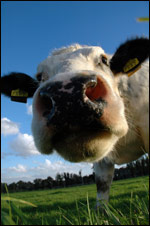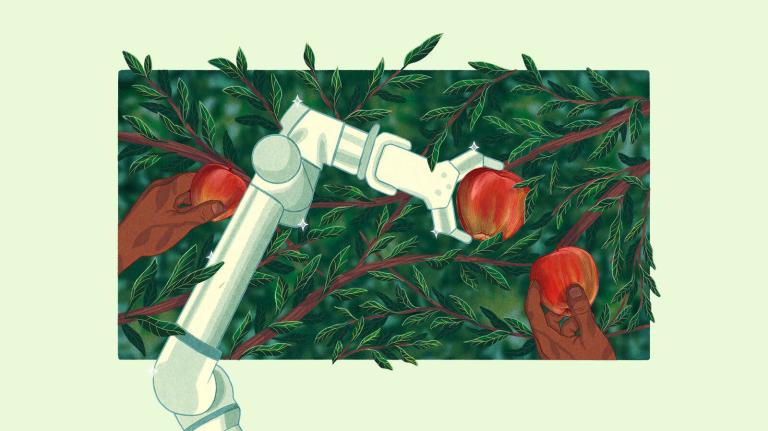
Cows that feed solely on pasture perform a valuable service: they transform what’s inedible to us — grass — into a rich source of protein and other nutrients. And when such cows are raised in moderate numbers, they can actually improve the health and biodiversity of grasslands. Moreover, cows evolved to eat grass, so the pasture model is clearly the most animal-friendly way to create beef.
To me, the grass-fed concept exemplifies responsible agrarianism: it’s energy efficient (it relies on no vast, petroleum-guzzling corn fields), it enhances rather than degrades the ecosystems it relies on, and it forces us to eat mindfully and in season.
If we insisted on raising all of our beef on ample pasture, every American would be able to savor the privilege of eating beef only, say, every couple of weeks — and less during the grazing season, when cows are fattening up.
Which sounds about right to me.
Leave it to the USDA — that hothouse of food-industry flackery — to attempt to screw it all up.
Let’s look at the USDA for a second. Its director, Mike Johanns, is a former governor of Nebraska, the nation’s top beef-producing state. Its deputy chief is Chuck Conner, former flack for uber-agribiz giant Archer Daniels Midland — which provides much of the corn that gushes into the nation’s feedlots.
Its chief of staff is Dale Moore, the former top lobbyist for the National Cattlemen’s Beef Association — which views concentrated feedlots and cheap corn as the proper elements of beef raising. Its undersecretary for food, nutrition, and consumer services, Kate Coler, previously served as chief lobbyist for the Food Marketing Institute — a trade group for supermarket chains. (Before that, she represented the American Bankers Association in its lobbying efforts before the USDA and Congressional ag committees).
Shot through with food-industry shills, it’s no wonder that the USDA has come out with an industry-friendly proposal for defining “grass-fed beef.”
Think beef labeled “grass-fed” should come from cows that graze outside on grass? You’re wrong, says the USDA. According to a recent AP story, the USDA’s latest proposal on the grass-fed label would cover confined cows fed hay and leftover corn stalks.
The agency’s official reasoning for proposing this loose standard sounds reasonable enough, at first glance. A USDA functionary explained to AP that:
With the geographic diversity found in the U.S., a farmer or rancher in Minnesota is going to have a little bit different grass-fed scheme than, say, one that’s located in Alabama, in the South where year-round grazing is available. What we tried to do with this grass-fed claim is make it where anyone in the U.S. that wanted to make this claim could.
But that’s bunkum. Sustainable agriculture — the movement that reintroduced grass-fed beef in the first place — respects geographical differences; it doesn’t try to paper them over. If grass-fed beef is easier to produce in Alabama than it is in Minnesota, then grass-fed steaks should be cheaper and more abundant in Alabama than Minnesota. Period.
Brazenly, the USDA man added that “insisting on access to pasture could be covered by another standard, such as the department’s rules for organic meat,” AP reported. Of course, the agency is already letting so-called “organic” cows be confined in feedlots as well.
The USDA’s endless shell games with labels like “organic” and “grass fed” will fool some consumers but not all. The best way to avoid being flummoxed by government bureaucrats doing industry’s bidding is to seek out farmers whose practices you know and trust.


